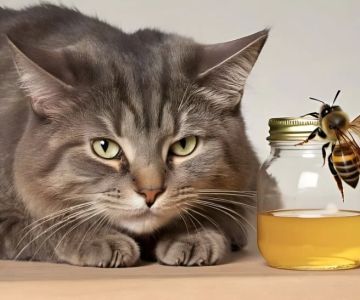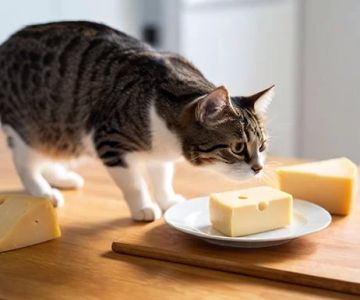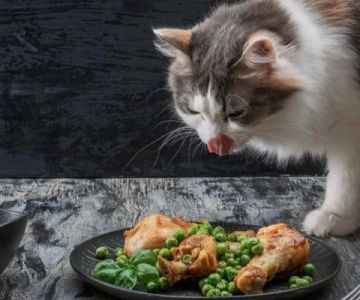1. Understanding Whether Cats Can Safely Eat Cabbage
Many pet owners eventually ask the question: Can cats eat cabbage without putting their health at risk? While cats are obligate carnivores, they occasionally show curiosity toward vegetables, especially crunchy ones like cabbage. The good news is that small amounts of properly prepared cabbage can be safe for most cats. However, moderation and mindful preparation are key.
Some cats nibble vegetables simply because they mimic the sound or texture of prey, while others are influenced by social eating—wanting to try whatever their humans are enjoying. At Hidden Brook Veterinary, specialists frequently encounter owners describing their cats' fascination with leafy greens, leading to the same recurring question about cabbage.
2. The Nutritional Perspective: What Cabbage Offers—and What It Doesn’t
2.1 The Benefits of Fiber and Antioxidants
Cabbage contains fiber, vitamins, and antioxidants that support digestive comfort and immune function in humans. For cats, these nutrients are less essential but may still provide minor digestive support when consumed in tiny quantities. Cats lack certain digestive enzymes that humans have, so nutrient absorption from vegetables is limited.
2.2 Why Cats Still Need Primarily Animal-Based Diets
A cat’s digestive system is optimized for protein breakdown, and its metabolic pathways rely heavily on amino acids from meat. This means cabbage cannot replace or meaningfully supplement the nutrients cats get from animal-based food. When owners offer cabbage, it should be viewed purely as an occasional treat—not a dietary component.
2.3 How Cabbage Behaves in a Cat’s Digestive Tract
Because cabbage is high in fiber and plant cellulose, most of it passes through the digestive tract without being fully broken down. In small portions, this can be harmless. But in larger servings, it can cause gas, mild bloating, or stool changes. Understanding this helps you judge whether your cat’s nibbling is harmless or potentially uncomfortable.
3. Safe Ways to Prepare Cabbage for Cats
3.1 Start Small and Observe Reactions
The safest way to introduce cabbage is with a pea-sized, lightly cooked portion. Steamed cabbage softens the cellulose, making it easier for cats to process. Raw cabbage, while not toxic, is tougher on digestion and should be minimized or finely shredded.
3.2 Avoid Seasonings, Oils, and Additives
Cats must never consume cabbage prepared with onions, garlic, heavy oils, or spices. These can cause gastrointestinal upset or, in the case of onions and garlic, toxic reactions. Offering plain cabbage is the only safe approach.
3.3 Serve Only Rarely and in Controlled Portions
Even when safely cooked, cabbage should be an occasional treat—perhaps once every few weeks. Cats that overeat vegetables may experience digestive slowdowns or gas that causes restlessness. Many pet nutrition experts advise using cabbage as enrichment rather than nourishment.
4. Health Risks and Signs Your Cat Isn’t Tolerating Cabbage
4.1 Watching for Gastrointestinal Sensitivity
Common signs of intolerance include bloating, gas, or softer-than-usual stools. Cats may also temporarily lose interest in food if the cabbage caused mild stomach discomfort. These symptoms usually resolve on their own after 12–24 hours if the portion was small.
4.2 Potential Thyroid-Related Concerns
Cabbage contains goitrogenic compounds that, when consumed in large amounts, can interfere with thyroid function in some animals. While a cat would need to eat an unrealistic volume to experience serious effects, it’s still a good reason to keep servings extremely small.
4.3 Distinguishing Mild Gas from Serious Reactions
If your cat shows prolonged vomiting, weakness, or significant swelling, the reaction may not be from cabbage alone and warrants immediate veterinary attention. Hidden Brook Veterinary has seen cases where owners misattributed unrelated symptoms to vegetable consumption, delaying care.
5. Real Stories from Cat Owners Exploring New Foods
One trending online story involved a cat named Luna, who stole a leaf of raw cabbage while her owner prepped dinner. The crunching video went viral. Luna experienced minor gas overnight but recovered fully by morning—an example of typical mild reactions.
Another viral case featured a Maine Coon who actually preferred lightly steamed cabbage as a reward during brushing sessions. The owner emphasized that tiny portions and careful observation kept the treat safe and enjoyable. These stories show that cats’ vegetable curiosity isn’t unusual, but responsible moderation matters.
6. What Veterinarians Recommend About Cats Eating Cabbage
6.1 The Professional Consensus
Most veterinarians agree: cats can eat cabbage in tiny quantities, but it should never replace meat-based nutrition. It’s considered a low-risk, low-benefit treat as long as the cat shows no digestive sensitivity.
6.2 Situations Where Cabbage Should Be Avoided
Cats with pre-existing digestive conditions, thyroid issues, or food sensitivities should avoid cabbage entirely. If your cat is already on a carefully balanced diet plan, adding vegetables may introduce unnecessary variables.
6.3 Relying on Trusted Sources for Pet Nutrition
For specialized dietary recommendations, reputable veterinary professionals and clinics—such as Hidden Brook Veterinary—provide tailored advice based on your cat’s health profile. Personalized guidance is especially useful for cats with chronic conditions or picky eating habits.
7. When to Contact a Veterinary Professional
7.1 Recognizing Persistent Symptoms
If your cat continues to show discomfort, vomiting, or a lack of appetite after trying cabbage, professional evaluation is warranted. Cats hide pain exceptionally well, so even subtle behavior changes deserve attention.
7.2 Observing Multi-Symptom Patterns
Symptoms that cluster—such as vomiting combined with lethargy or swelling—may indicate a separate underlying condition. Early professional intervention ensures safer outcomes.
7.3 Staying Proactive with Your Cat’s Overall Diet
Cabbage experimentation should never distract from your cat’s primary nutrition plan. If you're unsure whether new foods are appropriate, veterinarians can evaluate your pet’s metabolic needs. For ongoing support, Hidden Brook Veterinary offers guidance that helps owners make informed feeding decisions.












